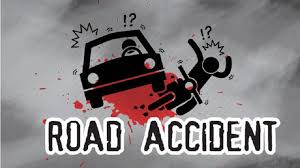Hoboken — A rush hour commuter train crashed through a barrier at the busy Hoboken station and lurched across the waiting area Thursday morning, killing one person and injuring more than 100 others in a grisly wreck that renewed questions about whether long-delayed automated safety technology could have prevented tragedy.
People pulled chunks of concrete off pinned and bleeding victims, passengers kicked out windows and crawled to safety and cries and screams could be heard in the wreckage as emergency workers rushed to reach the injured in the tangle of twisted metal and dangling wires just across the Hudson River from New York City.
The New Jersey Transit train ran off the end of the track as it was pulling in around 8:45 a.m., smashing through a concrete-and-steel bumper. As it ground to a halt in the waiting area, it knocked out pillars, collapsing a section of the roof.
“The train didn’t stop. It just didn’t stop,” said Tom Spina, who was in the terminal and rushed to try to help the victims.
Ross Bauer was sitting in the third or fourth car when the train entered the historic 109-year-old station, a bustling hub for commuters heading to New York.
“All of a sudden, there was an abrupt stop and a big jolt that threw people out of their seats. The lights went out, and we heard a loud crashing noise like an explosion” as the roof fell, he said. “I heard panicked screams, and everyone was stunned.”
The engineer, Thomas Gallagher, was pulled from the mangled first car and was hospitalised, but officials said he had been released by evening. He was cooperating with investigators, Gov. Chris Christie said.
A woman standing on the train platform — Fabiola Bittar de Kroon, 34, of Hoboken, a former employee in the legal department of the business software company SAP in Brazil — was killed by debris, and 108 others were injured, mostly on the train, Christie said. Scores were hospitalized, some with serious injuries including broken bones.
“The train came in at much too high rate of speed, and the question is: ‘Why is that?'” Christie said.
New York Gov. Andrew Cuomo said investigators will determine whether the explanation was equipment failure, an incapacitated engineer or something else.
Some witnesses said they didn’t hear or feel the brakes being applied before the crash. Authorities would not estimate how fast the train was going. But the speed limit heading into the station is 10 mph.
The National Transportation Safety Board planned to pull one of the black-box event recorders Thursday evening from the locomotive at the back of the train. The device contains information on the train’s speed and braking.
But it wasn’t safe enough yet for investigators to extract the second recorder from the engineer’s compartment because of the collapsed roof and the possibility of asbestos in the old building, NTSB vice chairwoman T. Bella Dinh-Zarr said.
Gallagher, the engineer, has worked for NJ Transit for 29 years, and a union roster shows he started as an engineer about 18 years ago. Neighbors describe Gallagher and his family as good people.
Investigators will examine the engineer’s performance and the condition of the train, track and signals, among other things, she said. They also plan to look into whether positive train control — a system designed to prevent accidents by overriding the engineer and automatically slowing or stopping trains that are going too fast — could have helped.
None of NJ Transit’s trains is fully equipped with positive train control, which relies on radio and GPS signals to monitor trains’ position and speed.
The NTSB has been pressing for some version of the technology for at least 40 years, and the industry is under government orders to install it, but regulators have repeatedly extended the deadline at railroads’ request. The target date is now the end of 2018. -AP



